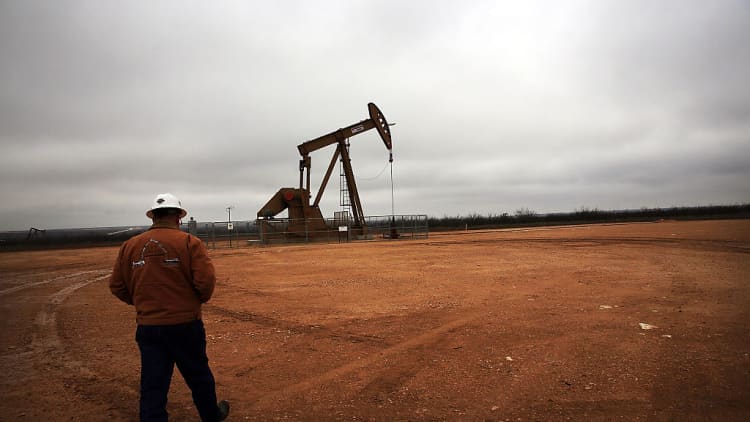
Oil prices are positioned to head higher in the second half, analysts said on Monday, after crude's dismal performance in the first six months of 2017 caught many commodity watchers flat-footed.
Crude oil prices fell about 14 percent this year through Friday's close, as an effort led by OPEC to drain huge global stockpiles disappointed the market. Some analysts see the potential for further declines, but a number of them told CNBC oil prices are more likely to rise than fall if they break out of a range.
Analysts said much of the recent trading has been based on technicals, or buying and selling based on crude's moves above and below certain price levels. Meanwhile, the physical market — which measures the actual number of barrels around the world — is moving back toward balance after a long period of oversupply that crushed prices, they said.
"We thought this market was actually a bit oversold. We think the fundamentals are better than where the price was earlier," Helima Croft, the global head of commodity strategy at RBC Capital Markets, told CNBC's "Squawk on the Street" on Monday.
U.S. crude prices plunged into bear market territory last month, tumbling to a 10-month low of $42 a barrel. The drop came after bets that oil prices would tick higher rose to record levels earlier this year.

That set up a sharp reversal when OPEC's output cuts failed to fully achieve their goal: to drive crude stockpiles down to the five-year average by June. Oil traders were also surprised by the speed of U.S. shale drillers' response to higher prices in the first part of the year.
The number of rigs operating in U.S. fields has more than doubled in the past year, and American production has recovered by about 900,000 barrels a day to roughly 9.3 million barrels a day, according to preliminary weekly figures.
The rig count fell for the first time in about six months on Friday, and the question is whether this now marks the start of a trend, Croft said. The other key factor is whether global stockpiles fall significantly in the second half, she added.
Croft also says the market is not fully appreciating geopolitical risks in the Middle East, where Gulf states are embroiled in a diplomatic crisis. This "very, very dangerous situation" could send prices higher, she warned.
Oil prices can still move lower, but there is key technical support for oil futures between $37 and $41 a barrel, according to Stephen Schork, editor of The Schork Report. Oil prices rose toward $47 a barrel on Monday.
If oil prices break out of a range, it's more likely the direction will be higher, Schork said. He attributed the sell-off not only to rising U.S. production but the growing consensus that OPEC can no longer support oil prices with simple policy announcements.
"Given that all these bearish headlines have been priced into the market, if you're going to have any sort of risk of a large outside move, I think it would be to the upside at this point," he told "Squawk on the Street" on Monday.

OPEC-led output cuts have better odds of pushing down stockpiles going forward because the world typically consumes more oil in the second half of the year than in the first, according to Jacques Rousseau, managing director at Clearview Energy Partners.
"What that means is this is OPEC's big chance. As long as they can keep oil supply relatively constant, this higher demand is going to draw down inventories," he told CNBC's "Squawk Box" on Monday.
On Monday, financial services firm Raymond James said gloomy headlines had created a "negative feedback loop" and asserted that most of the bearish trends in the market were overstated.
The "simple reality is that we think some oil price headlines have been misleading, or outright wrong, and they have distracted investors from what we believe is fundamentally a bullish overall picture for oil," the firm wrote in a research note.
While many market watchers have recently cut their oil price forecasts, Raymond James maintained its call that oil prices will average $65 in 2018.


